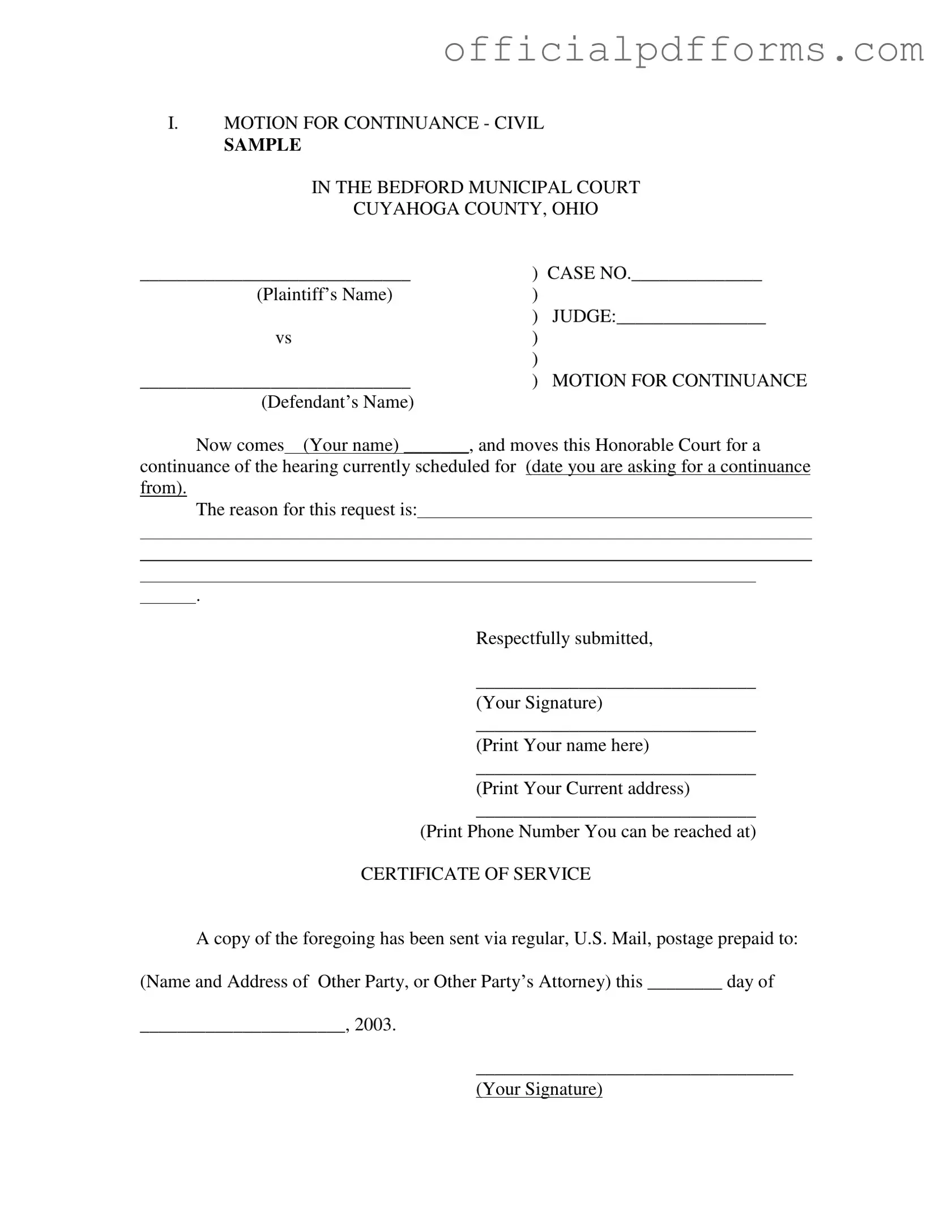What is a Motion for Continuance?
A Motion for Continuance is a formal request to postpone a scheduled court hearing. It allows a party involved in a case to ask the court for additional time to prepare or address unforeseen circumstances that may prevent them from attending the hearing as planned.
When should I file a Motion for Continuance?
You should consider filing a Motion for Continuance if you have a valid reason that prevents you from attending a scheduled court hearing. Common reasons include:
-
Medical emergencies or illness
-
Scheduling conflicts, such as prior commitments
-
Need for additional time to gather evidence or prepare your case
-
Unavailability of a key witness
It is essential to file the motion as soon as you realize you cannot attend the hearing to give the court adequate time to consider your request.
Filling out the Motion for Continuance form involves several key steps:
-
Begin by entering the case number at the top of the form.
-
Clearly state the names of the plaintiff and defendant.
-
In the body of the motion, provide your name and the date of the scheduled hearing you wish to postpone.
-
Explain the reason for your request in a concise and respectful manner.
-
Sign the form and print your name, current address, and phone number.
-
Complete the Certificate of Service section by including the name and address of the other party or their attorney.
Ensure that all information is accurate and complete to avoid delays in processing your motion.
What happens after I file the Motion for Continuance?
Once you file the Motion for Continuance, the court will review your request. The judge will decide whether to grant or deny the motion based on the reasons you provided. If the motion is granted, you will receive a new date for the hearing. If denied, you must attend the hearing as originally scheduled.
Is there a fee associated with filing a Motion for Continuance?
In many cases, there is no fee to file a Motion for Continuance. However, this can vary by jurisdiction. It is advisable to check with the local court or consult the court’s website for specific information regarding fees in your area.
Can I file a Motion for Continuance on behalf of someone else?
Generally, you can only file a Motion for Continuance on behalf of someone else if you have been authorized to do so, such as being their legal representative or attorney. If you are not an attorney, it is best to encourage the individual involved in the case to file the motion themselves.
What if my Motion for Continuance is denied?
If your Motion for Continuance is denied, it is crucial to prepare for the hearing as scheduled. Gather any necessary documents, evidence, or witnesses to support your case. If you feel the denial was unjust, you may want to consult with a legal professional for guidance on your options moving forward.
